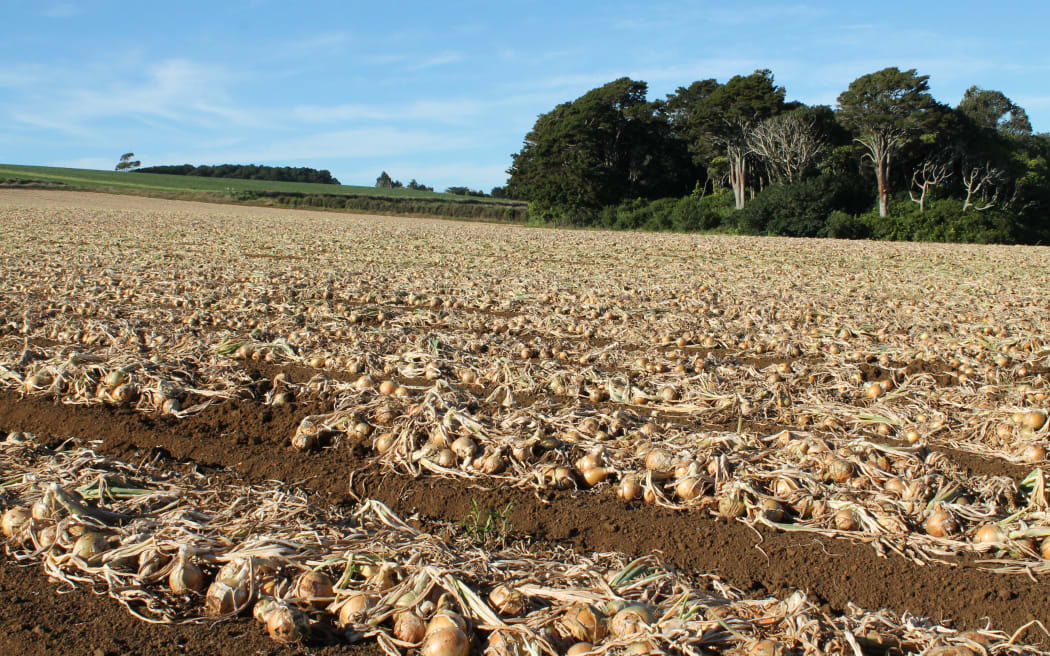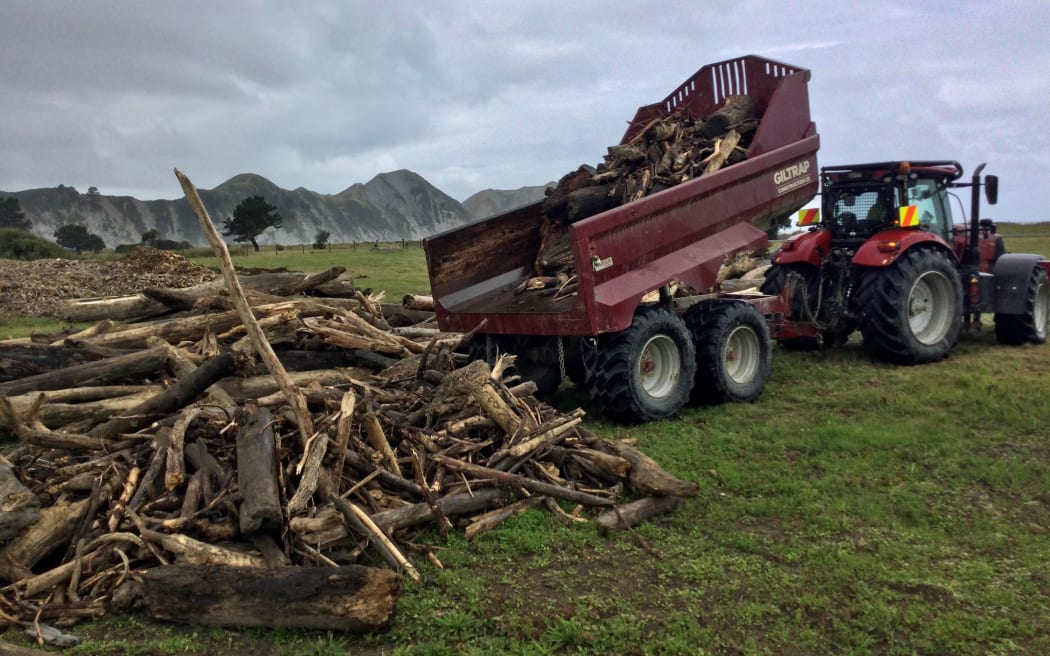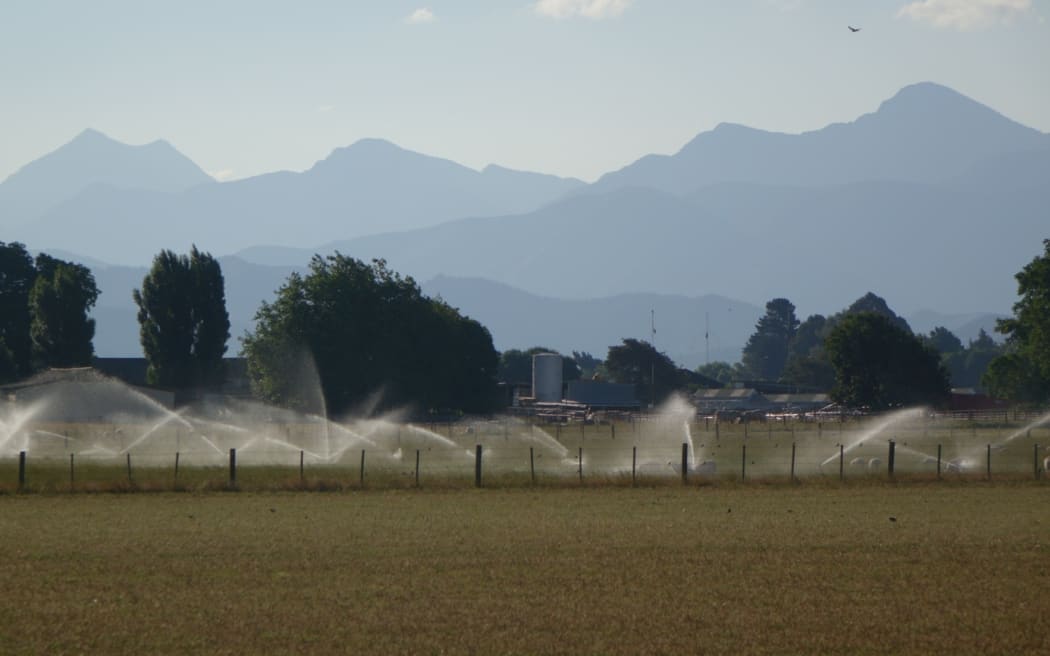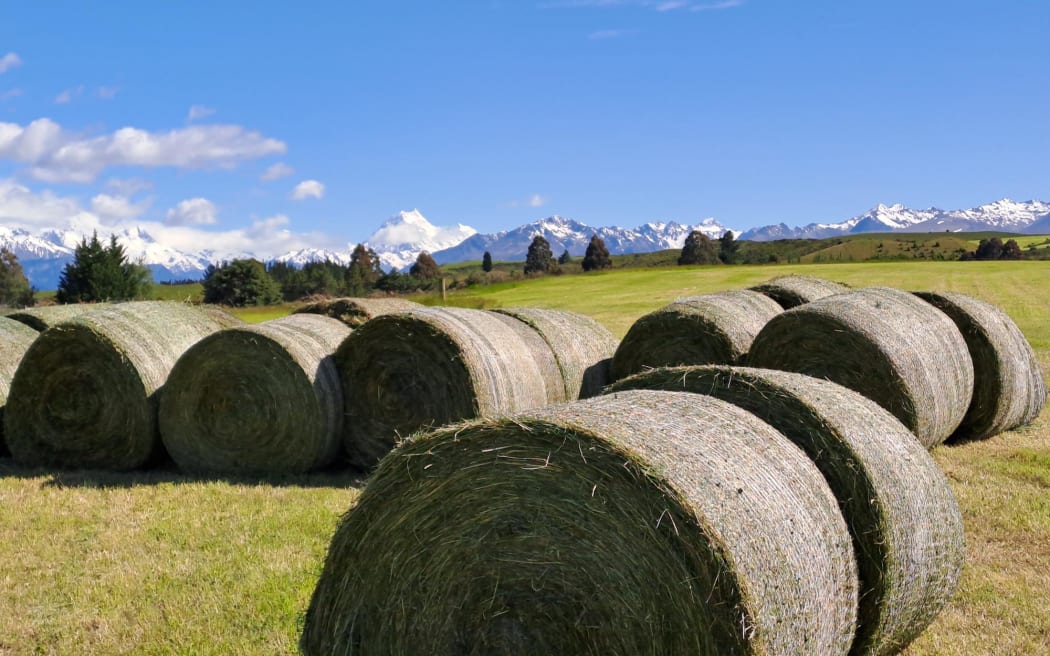High amounts of rainfall in Northland have been welcomed by most - except holidaymakers. The well-being of farmers is also in good shape thanks to the amount of feed going around...although the effects of endless rain at the beginning of Summer is starting to show in crops. Our contact warns there are clinical signs of facial eczema showing in some herds as higher temperatures are beginning to be more frequent.
In Auckland, ex-tropical cyclone Hale delivered 20 millimetres of rainfall, but since, the weather has been generally fine and warm for two weeks. At this time of year, harvesting main crop onions is the predominant cropping activity and the weather has been on the industry's side. However, this is about to change with incoming rain so many dry onions still on the ground will have to put up with wetness for a few days.

Photo: RNZ/Carol Stiles
Cows are laying in grass in Waikato - an unheard of scene in January. This time last year, the farm resembled a desert but our contact says he has 2000 more litres of milk a day than last year. Mating, silage and cropping are all over. Our contact harvested maize 10 days later than normal, however, knows he's more fortunate than his neighbour - one couldn't replant after the paddock was washed out before Christmas. He says farmers have given up trying to make hay as the ground isn't getting dry enough, instead, its turned into silage.
La Nina weather patterns are testing the resilience of Bay of Plenty growers. Rain is stopping workers from getting out on the orchard, stopping pruning, and stopping sprays from being put on in time. On top of that, its producing excess growth providing more labour that workers are struggling to achieve as they keep getting rained off. Our contact says in his 50 years growing kiwifruit, he hasn't ever had a season like it. He says mother nature can be a cruel woman and expects she will cost him hundreds of thousands of dollars.
Fine and warm in Taranaki is getting people ready for a good dumping of rain - there have been sprinklings but it doesn't take long for the growth rate to decline. There is good pasture cover in front of farmers now, yet whether that continues or not will depend on the next 10-day forecast. There is concern mating was not as successful as would've hoped due to the wet spring...its hard enough getting a cow pregnant while lactating, and the rain was an added pressure...but time will tell with pregnancy tests set to be done in the next few weeks.

Debris piled up before chipping into material that is more readily transportable Photo: Eastland Wood Council
In Gisborne, it's been the wettest Summer our contact can recall. From a cropping point of few....what a disaster. Very few crops got in. Sweet corn has been okay but not as sweet. If the warmer temperatures continue with the ongoing moisture, our contact fears there will be large issues with facial eczema. Hay contractors are also six to eight weeks behind schedule. But the biggest heartache came after flooding and slash flattened a new fence on our contacts farm - it's the third time in three years and thousands of dollars down the drain. The only positive he can take is there is a greater level of awareness of what to do when these weather events occur. The state of emergency declared on January 10th, was the third in 14 months for the region.
In the Rangitikei District, all those thunderstorms pre-Christmas have turned into a bulge of surplus feed. But don't be sucked into a false sense of security because our contact says it's starting to feel dry. However, the surplus did bode well for one country school - it cashed in about $30 thousand towards school camps with a hay-making fundraiser. The Fielding sales yard had a couple of really strong weeks, and farmers seem to be holding on to stock for a little bit longer, to max out their weight and ultimately their value - but it's worked out two-fold as it's eased the pressure point on the freezing works.
It's a bit windy in Wairarapa - causing a few headaches for those trying to spray their crops. An olive grower says he's in major catch-up mode, pruning like mad because the first two weeks of the year were too wet to achieve anything. The ground is still looking green, and he's happy to not have the rain as heavy...wet weather can cause fungal issues but it won't show itself for three to six months after.

Irrigation in full swing in Marlborough as the country is gripped by high temperatures. Photo: RNZ / Tracy Neal
The Tasman District is hot and dry - thankfully irrigation is keeping up. Hops are growing well, and on some of the earlier varieties, cone development can be seen. Our contact says they're about a month away from harvesting. The plants were lacking sunshine with a wet lead-up until Christmas, and while they haven't caught up on the sunshine hours, they have definitely improved with the warmer weather this month. While the season is forecast to be nothing special, he hasn't had to look hard for staff - and in general, the availability of labour is improving with more backpackers around.
It's the place to be on the West Coast - Hot hot hot! But it's been too hot for grass growth. The main thing on the mind is when is the rain coming and is it going to grow any grass. A lot of supplementary feed is being handed out and it's said to be quite early for dry conditions like these on the coast. With more chance of rain next week farmers are hoping it will get them back to a level of pasture cover they are comfortable with. Fall armyworm has been found in maize crops too - it has the potential to be hugely detrimental as it can destroy large tracks of crops.

Baleage cut ahead of rain scheduled this weekend. Photo: RNZ/Susan Murray
Canterbury has got really dry all of a sudden. Grass under pivot is growing okay - but the stress is there. Cows are still producing well, with plenty of feed around and plenty of silage being made. Mating rates have been average to a little bit above, but people are in good spirits.
Our contact in Central Otago was bordering on ecstatic when we called - it looked like it was about to rain! The region hasn't had appreciable rain for a month, so things are dry. Our contact has had to cut the irrigators back by a quarter this week because the water isn't there. Second cuts of hay are being harvested and weaning is in the tail end now although lambs haven't done as well as normal.
It's shearing weather in Southland. Temperatures are in the high twenties and there is a bit of a breeze - but pasture growth has dropped dramatically. If the region doesn't get good rain in the next 10 days there is need for some triggers to be pulled. Its the same weather patterns as last year really, but our contact says they would happily swap the sun with the rain in the North Island. Lots of supplement is being fed already, but with the large amount made in Spring, there is still plenty to munch through yet.

